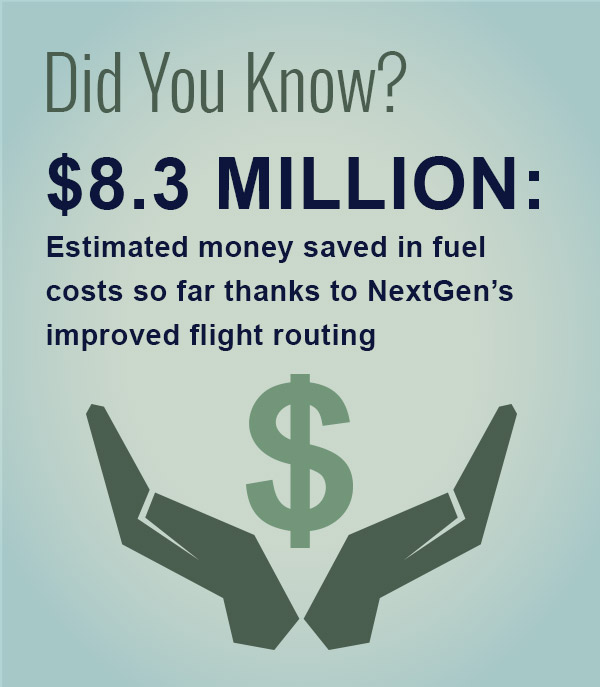
Improved Terminal and En Route Operations
Trajectory-Based Operations (TBO)
- A distributed tool-supported process for addressing local airspace problems by modifying trajectories of one or more aircraft
- Provides the capabilities, decision support tools, and automation to manage aircraft movement by trajectory
- Implements RTAs (Required Time of Arrival) along the flight’s trajectory
- Before flight leaves, trajectory is deconflicted by Air Traffic Control (ATC)
Time-Based Flow Management (TBFM)
- Strategies to control the flow of flights arriving into highly congested terminal airspace at selected airports
- Leverages capabilities of Traffic Management Advisor (TMA)
Time-Based Metering (TBM)
- Delivery times of arriving aircraft from en route to terminal domains are coordinated to simplify merging and spacing
- Allows reduced controller workload, less of a need to vector and assign airspeeds
Required Times of Arrival (RTA)
- Capability of an FMS to “self-deliver” to a specified waypoint at a specified time
Improved Surface Operations
Taxi routing
- Improved taxi route efficiency
- Provides for manual input to close and reopen taxiway and runway segments
Airport configuration management
- Improves responsiveness and effective use of airport resources
- Provides automation to analyze, schedule, implement, and disseminate airport configuration changes
- Provides capability to assess the impact of airport configuration changes
Scheduling and sequencing
- Provides improved departure schedule integrity
- Generates and displays a projected runway schedule showing departure and arrival demand
- Provides Time Flow Management (TFM) constraints, such as expected departure clearance times to tower controllers
Runway assignments
- Air Traffic Control (ATC) automation system assigns an aircraft to a runway based on departure fix and enables Air Navigation Service Provider (ANSP) personnel to accept/modify runway assignment
Optimized Profile Descent (OPD)
- Enables arrival aircraft to descend from cruise altitude to final approach with significantly fewer level-offs
- Enables lower and steadier power settings, and results in reduced fuel burn, lower emissions, and reduced noise
- Reduced Carbon Dioxide: NextGen will reduce carbon emissions by 14 million tons by 2020
- Reduced Fuel Consumption: NextGen will reduce fuel consumption by 1.4 billion gallons by 2020
- Reduced Noise Emissions: Through quieter engines and procedures like OPDs, the number of people impacted by noise has been reduced to fewer than 500,000
- OPD Benefits: Fuel savings at Miami International Airport (MIA): 50 gallons per flight; Reduced carbon dioxide emissions at MIA: 1,000 pounds per flight

